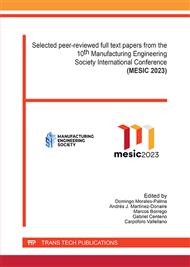p.384
p.394
p.405
p.413
p.423
p.432
p.443
p.453
p.464
Guide for the Implementation of Operational Control Procedures in Underwater Cutting and Welding Activities
Abstract:
Professional diving is an occupation that includes a wide spectrum of different activities, but with the same common denominator: its performance underwater. It is carried out in both fresh and salt waters and encompasses such disparate tasks that professional diving is currently present in numerous productive sectors: hydrocarbon extraction, offshore platforms, port maintenance, public works, civil engineering, infrastructure hydraulic, power plants (hydroelectric, thermal and nuclear), shipbuilding, underwater construction, aquaculture, ship and boat salvage, NDT filming and reporting, teaching and training, and scientific research (geological, biological, archaeological, etc.). It is also characterized by being one of the most dangerous professions and presenting very specific risks, derived from the workplace in a hyperbaric environment, combined with to other hazards of the work activity similar to those of the ground workers. The objective of this study is to analyse procedural models based on the UNE_EN_ISO 45001:2018 Standard, applied to the execution of thermal cutting and underwater welding works. In order to carry out this work safely and in the most effective way, it must be systematically analysed, generating procedures and work instructions based on the tasks considered critical, and essential knowledge for all personnel who perform them. Such procedures and instructions should be based on a systematic analysis of the steps taken to perform each task, including the risks involved and the safety measures to be taken to control, reduce or, where appropriate, eliminate them.
Info:
Periodical:
Pages:
423-431
Citation:
Online since:
October 2023
Price:
Сopyright:
© 2023 Trans Tech Publications Ltd. All Rights Reserved
Share:
Citation:



